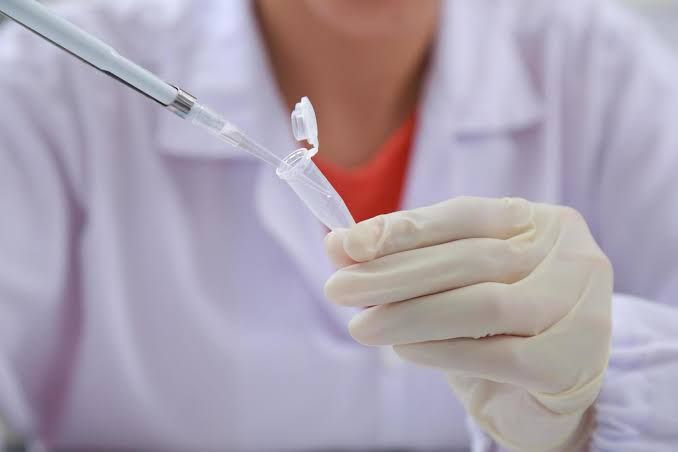
DNA extraction is a critical process in molecular biology, forensic science, and medical diagnostics. Various methods exist for extracting DNA from different biological samples, each with its own advantages and applications. Below is a detailed exploration of several DNA extraction methods and their applications.
1. DNA Extraction Methods
(a) Organic Method
The organic method involves the use of phenol-chloroform to separate DNA from proteins and other cellular debris. The process typically includes:
- Cell Lysis: Cells are lysed using a lysis buffer containing detergents.
- Phase Separation: Phenol-chloroform is added, and the mixture is centrifuged to separate the aqueous phase (containing DNA) from the organic phase (containing proteins).
- Precipitation: DNA is precipitated using alcohol (ethanol or isopropanol) and then washed with ethanol to remove impurities.
This method is effective but can be hazardous due to the use of toxic chemicals.
(b) Chelex Method
The Chelex method utilizes a chelating resin (Chelex 100) that binds divalent metal ions, which helps protect DNA during extraction. The steps include:
- Sample Preparation: Biological samples are mixed with Chelex resin in a buffer.
- Heating: The mixture is heated to lyse cells and release DNA.
- Centrifugation: After cooling, the supernatant containing DNA is collected.
This method is particularly useful for forensic samples as it minimizes contamination and degradation.
(c) FTA Card
FTA cards are specialized filter paper that contains chemicals to lyse cells and stabilize nucleic acids. The procedure involves:
- Sample Application: Blood or other biological fluids are applied directly onto the card.
- Drying: The card dries, preserving the sample for long-term storage.
- DNA Recovery: When needed, DNA can be eluted from the card using water or buffer.
FTA cards are advantageous for fieldwork due to their stability and ease of transport.
(d) Differential Extraction
Differential extraction separates sperm cells from epithelial cells in sexual assault cases. The process includes:
- Lysis of Epithelial Cells: A lysis buffer selectively breaks down epithelial cells while leaving sperm intact.
- Separation: Centrifugation separates the two cell types.
- Sperm Cell Lysis: A second lysis step extracts DNA from sperm cells.
This method allows for targeted analysis of male-specific DNA in mixed samples.
(e) Spin Columns
Spin column methods utilize silica membranes that bind DNA under specific conditions. The steps include:
- Sample Preparation: Cells are lysed, and lysate is applied to a spin column.
- Washing: Contaminants are washed away using wash buffers.
- Elution: Pure DNA is eluted using an elution buffer or water.
Spin columns offer rapid processing times and high purity levels of extracted DNA.
(f) Magnetic Beads
Magnetic bead-based extraction uses beads coated with materials that bind nucleic acids. The procedure involves:
- Binding: After cell lysis, magnetic beads are added to bind the released DNA.
- Separation: A magnet pulls beads out of solution, allowing contaminants to be washed away.
- Elution: Pure DNA is eluted from the beads.
This method provides flexibility in automation and scalability for high-throughput applications.
2. Applications Based on Sample Type
- Liquid Blood: Liquid blood can be processed using any of the aforementioned methods; however, spin columns and Chelex methods are commonly used due to their efficiency in yielding high-quality genomic DNA suitable for downstream applications like PCR.
- Soft Tissues: For soft tissues, organic extraction or spin column methods are preferred because they effectively isolate intact genomic material necessary for genetic analysis or sequencing.
- Bone and Teeth: Extraction from bone or teeth often requires more rigorous protocols due to their dense structure. Organic methods or specialized kits designed for hard tissues may be employed after decalcification processes.
- Buccal Cells: Buccal swabs can be efficiently processed using Chelex or spin column methods since these techniques yield high-quality results with minimal contamination risk.
- Semen Samples: Differential extraction is specifically tailored for semen samples where male-specific profiles need isolation from female epithelial cells present in sexual assault cases.
- Blood Stains and Semen Stains: For dried stains on surfaces, FTA cards provide an excellent option as they stabilize nucleic acids upon drying, making them suitable for forensic investigations where sample integrity over time is crucial.
3. Quantitation Techniques
Once extracted, quantifying the amount of DNA obtained is essential before proceeding with further analyses such as PCR or sequencing. Common quantitation techniques include:
- Spectrophotometry: Spectrophotometry measures absorbance at specific wavelengths (260 nm for nucleic acids). This technique provides an estimate of concentration based on Beer-Lambert law but does not distinguish between pure nucleic acids and contaminants effectively.
- Fluorometry: Fluorometric assays use fluorescent dyes that specifically bind to double-stranded DNA (e.g., PicoGreen). This method offers higher sensitivity than spectrophotometry and allows quantification even at low concentrations.
- Slot-Blot Analysis: Slot-blotting involves applying samples onto a membrane followed by hybridization with labeled probes specific to target sequences. This technique provides qualitative data about presence/absence but can also give quantitative estimates based on signal intensity compared to standards.
- Real-Time PCR (qPCR): Real-time PCR quantitatively measures amplification during PCR cycles through fluorescent signals generated by intercalating dyes or probe-based systems. It provides precise quantification of target sequences in real-time during amplification cycles, making it highly sensitive and specific for various applications including pathogen detection and genetic profiling.
Conclusion
In summary, various methods exist for extracting DNA from diverse biological samples tailored according to sample type and intended application. Each method has its own strengths regarding efficiency, purity, ease-of-use, safety considerations, and suitability for downstream applications such as quantification via spectrophotometry or qPCR techniques. Understanding these methodologies enables researchers and forensic scientists alike to select appropriate strategies based on their specific needs while ensuring reliable results across different contexts.







